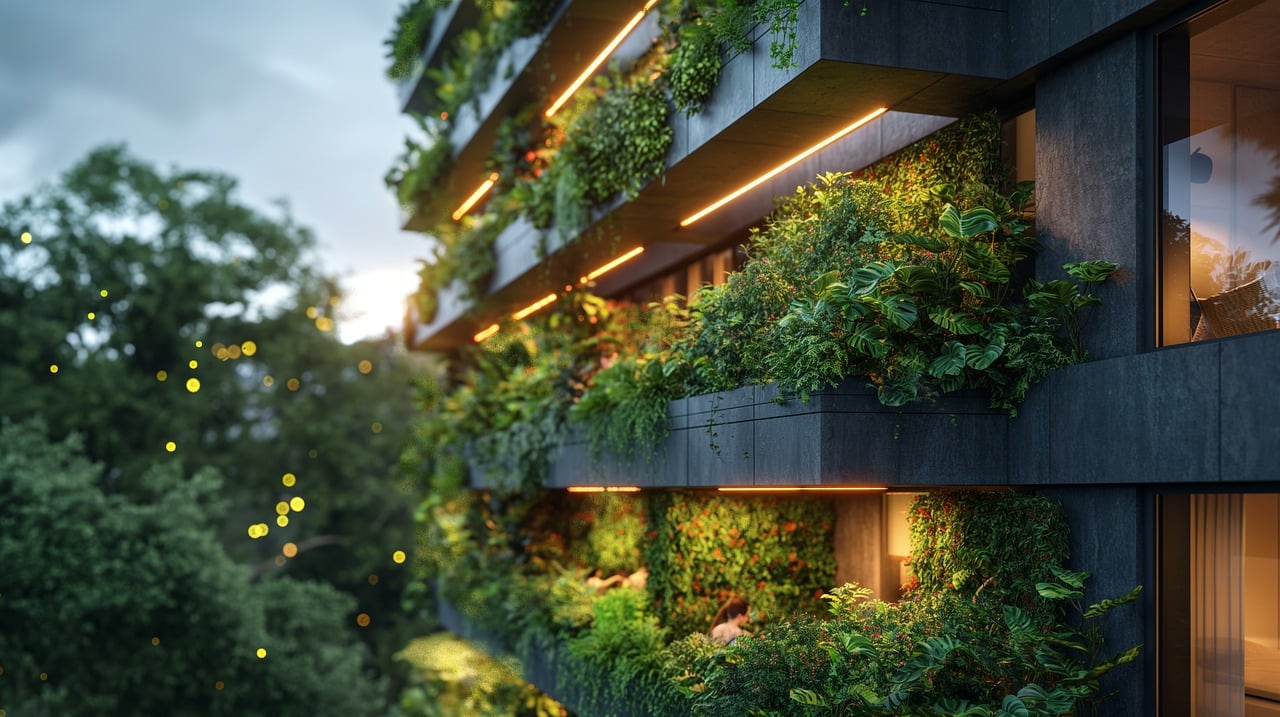
In recent years, sustainability has become a pivotal focus in the real estate industry. As climate change concerns intensify and the global population continues to rise, the demand for environmentally friendly and energy-efficient housing solutions has never been greater. In this blog post, we’ll explore how the real estate sector is evolving to meet these challenges and the innovative strategies being employed to create sustainable living environments.
The Importance of Sustainability in Real Estate
Traditional real estate development often involves significant energy consumption, resource depletion, and environmental degradation. High carbon emissions from construction activities, reliance on non-renewable materials, and inefficient building designs contribute to the growing ecological footprint. Addressing these issues is crucial for reducing environmental impact and promoting a healthier planet.
Sustainability in real estate not only benefits the environment but also offers economic and social advantages. Energy-efficient buildings lower utility costs, sustainable materials reduce long-term maintenance expenses, and green spaces enhance residents’ well-being. Moreover, eco-friendly developments often command higher property values and attract conscientious buyers and tenants.
Key Sustainable Practices in Real Estate
- Energy-Efficient Design and Construction
- Incorporating energy-efficient appliances, lighting, and HVAC systems.
- Using sustainable building materials such as recycled steel, bamboo, and Compressed Stabilized Earth Blocks (CSEB).
- Implementing passive solar design principles to maximize natural light and heat.
- Renewable Energy Integration
- Installing solar panels and wind turbines to generate clean energy.
- Utilizing geothermal heating and cooling systems.
- Incorporating energy storage solutions like batteries to store surplus energy.
- Water Conservation Measures
- Implementing rainwater harvesting systems for irrigation and non-potable uses.
- Installing low-flow faucets, toilets, and showerheads to reduce water consumption.
- Designing drought-resistant landscaping with native plants.
- Green Building Certifications
- Pursuing certifications such as LEED (Leadership in Energy and Environmental Design), BREEAM (Building Research Establishment Environmental Assessment Method), and WELL Building Standard.
- Adhering to sustainable construction practices and operational guidelines.
- Smart Home Technologies
- Integrating home automation systems for energy management and efficiency.
- Using smart thermostats, lighting controls, and security systems.
- Enhancing comfort and convenience while reducing energy usage.
- Waste Management Solutions
- Providing recycling and composting facilities.
- Implementing construction waste reduction practices.
- Educating residents on sustainable waste disposal methods.
Benefits of Sustainable Real Estate
- Environmental Impact
- Reducing greenhouse gas emissions and reliance on non-renewable resources.
- Conserving water and energy through efficient designs and practices.
- Promoting biodiversity and green spaces in urban environments.
- Economic Advantages
- Lowering operational and maintenance costs for property owners and residents.
- Increasing property values and marketability.
- Qualifying for green financing options and incentives.
- Social and Health Benefits
- Enhancing residents’ physical and mental well-being through access to green spaces and nature.
- Fostering a sense of community with shared amenities and communal areas.
- Improving indoor air quality and living conditions.
Case Study: ABUNDENSE Project
The ABUNDENSE project exemplifies how sustainable real estate can be achieved through innovative practices and technologies. This development prioritizes energy-efficient designs, renewable energy sources, and smart home technologies to create eco-friendly living spaces. Community engagement and well-being are also central to the project’s vision, with features such as community gardens, recreational areas, and regular events.
By integrating these sustainable elements, ABUNDENSE not only minimizes its environmental footprint but also enhances the quality of life for its residents. The project serves as a model for future developments aiming to balance ecological responsibility with economic and social benefits.
Conclusion
Sustainability in real estate is no longer a luxury but a necessity. As the industry evolves, adopting sustainable practices will be crucial for mitigating environmental impact and promoting a healthier, more resilient future. By embracing energy-efficient designs, renewable energy integration, and smart home technologies, real estate developers can create vibrant, eco-friendly communities that benefit both people and the planet. The journey toward sustainability is ongoing, and every step forward brings us closer to a greener, more sustainable world.

No responses yet